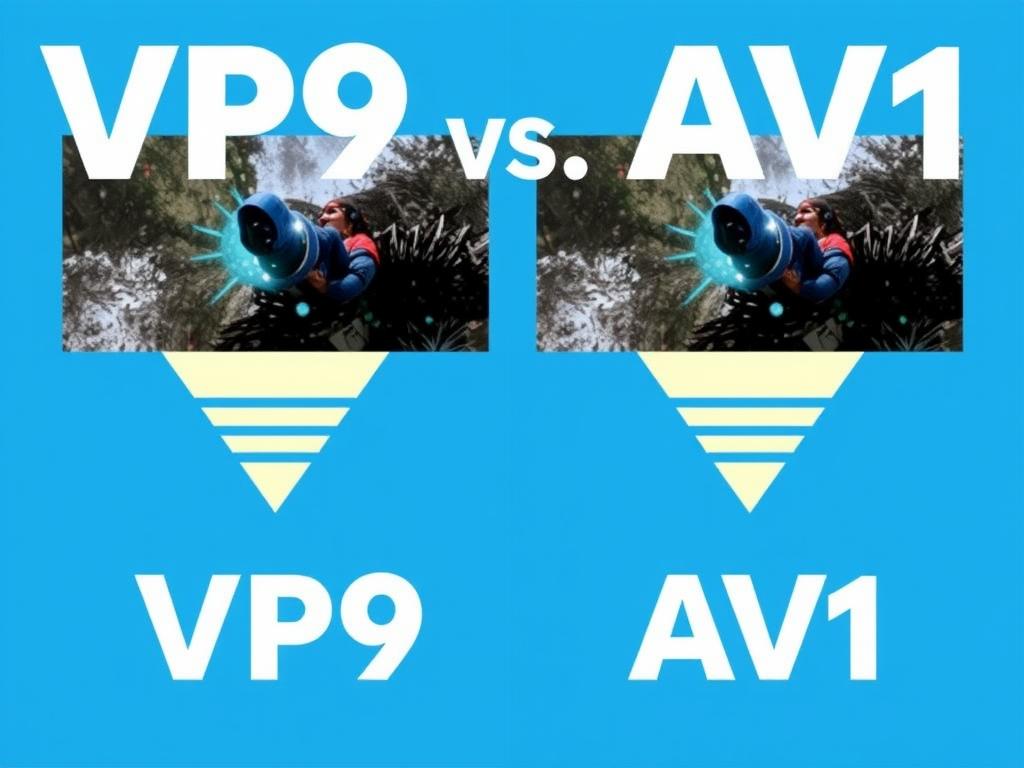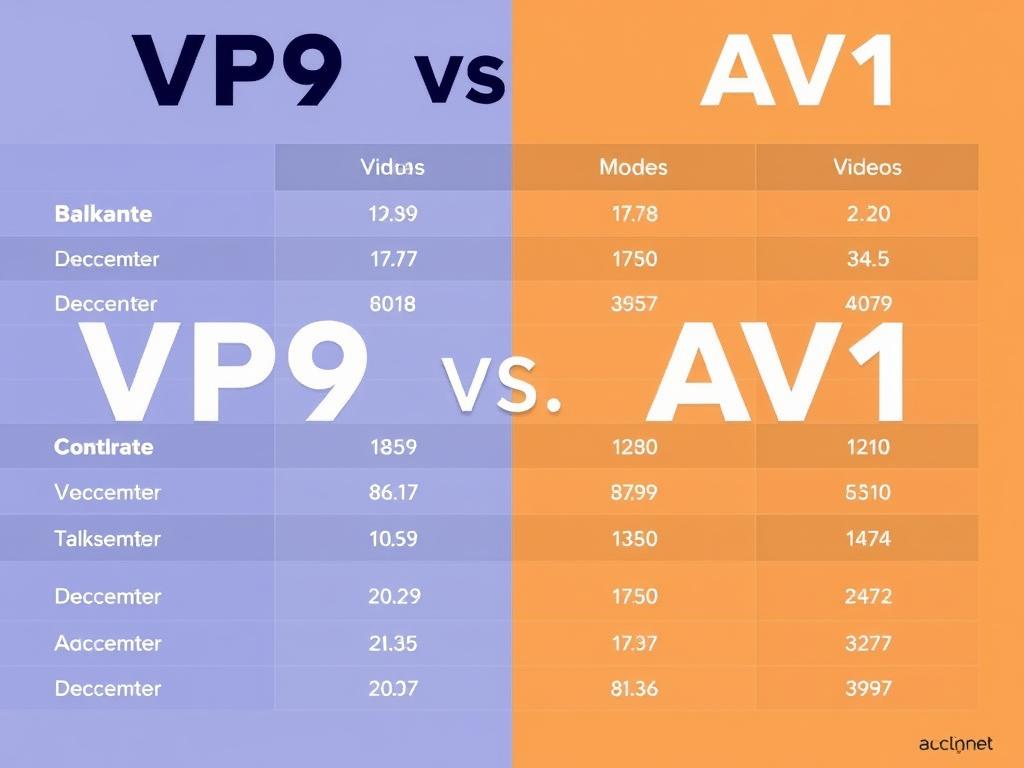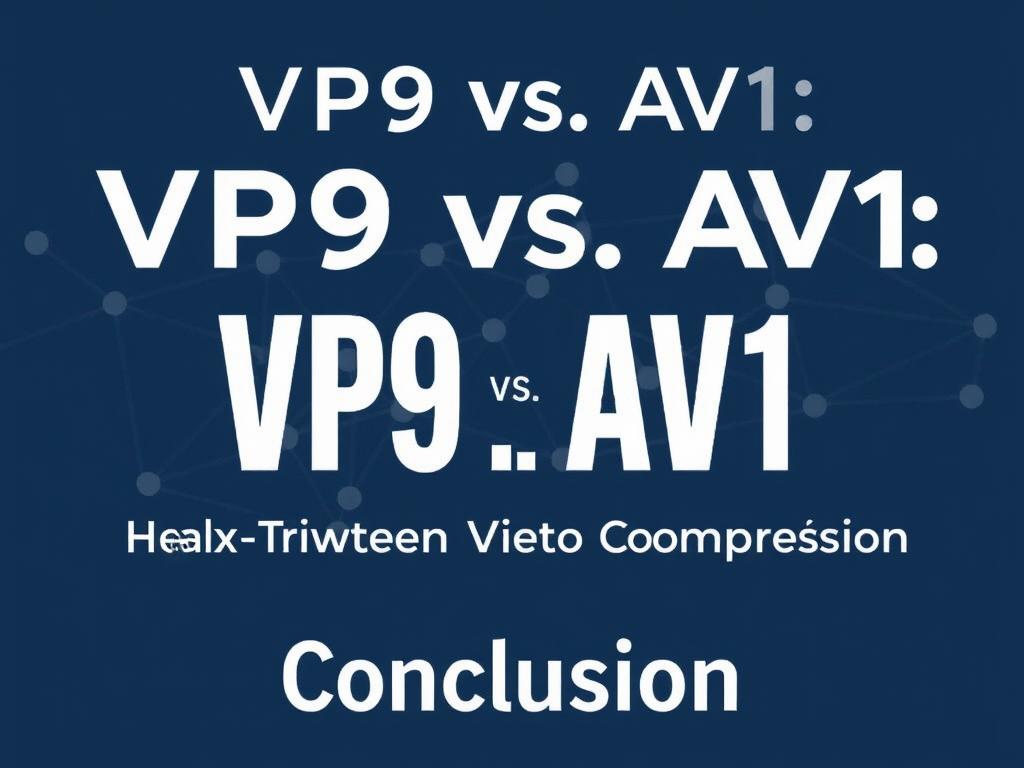In today’s digital world, video content dominates internet traffic more than ever before. As people stream movies, watch live events, and share videos on social media, the demand for efficient video compression technologies has skyrocketed. Two major players have emerged in this arena: VP9 and AV1. These video codecs are shaping the future of how we consume high-quality video content with minimal bandwidth. But what exactly are VP9 and AV1? How do they compare, and why is their battle for next-gen video compression so significant? Let’s dive into it and find out why these codecs matter to every user and content provider alike.
What Are VP9 and AV1?
Video compression codecs like VP9 and AV1 are software algorithms that reduce the size of video files while maintaining as much of the original quality as possible. When you stream a video, it isn’t sent as a full, raw file but rather as compressed data that your device decompresses in real-time. This makes streaming efficient, reducing buffering and saving bandwidth.
VP9 was developed by Google as a successor to VP8, aiming to compete directly with the widely used H.264 codec and later HEVC (H.265). It quickly gained traction, especially on platforms like YouTube, because of its relatively good compression efficiency and royalty-free licensing.
AV1, on the other hand, is a newer codec created by the Alliance for Open Media (AOMedia), a consortium including tech giants like Google, Apple, Netflix, Amazon, and Microsoft. Designed as a next-generation codec from the ground up, AV1 promises even better compression efficiency, optimizing video delivery in a world moving toward higher resolutions like 4K and HDR.
Key Differences in Design and Development
VP9 was designed to be straightforward to adopt for streaming services and browsers. Its architecture, while an improvement on VP8, shares some similarities with previous codecs but incorporates better tools for reducing bitrate without sacrificing too much quality.
AV1, however, represents a more ambitious step forward. It implements new and complex compression techniques that aren’t found in VP9. These advances allow AV1 to squeeze about 30% more data efficiency on average compared to VP9, meaning smaller files for the same quality or better quality at the same size.
Performance Comparison: Which Codec Delivers Better?
When it comes to choosing a codec for video compression, performance is everything. Users want great quality, fast loading times, and minimal buffering. Content providers want to reduce bandwidth costs and reach audiences with varied internet speeds. Here’s where VP9 and AV1 show their strengths and limitations.
Compression Efficiency

Compression efficiency refers to how well a codec can reduce the size of a video file while maintaining visual fidelity. In extensive testing across various resolutions and content types:
- VP9: Offers a notable improvement over older codecs like H.264, reducing file sizes by about 40-50% for equivalent quality.
- AV1: Pushes this further by approximately 20-30% better compression than VP9, particularly at higher resolutions such as 4K and 8K.
Because AV1 can deliver nearly the same quality at a significantly lower bitrate, it’s ideal for streaming platforms aiming to conserve bandwidth.
Encoding and Decoding Complexity
Although AV1 beats VP9 in compression, this advantage comes at a cost—complexity.
| Aspect | VP9 | AV1 |
|---|---|---|
| Encoding Speed | Moderate to fast | Much slower due to complex algorithms |
| Decoding Efficiency | Efficient on a wide range of devices | Requires more powerful hardware, especially for high resolutions |
| Hardware Support | Widespread support across many devices and browsers | Growing but still limited compared to VP9 |
The slower encoding times for AV1 mean content creators need more processing power and time to encode videos in this format. Nevertheless, the continuous improvement in software and hardware support is gradually reducing these limitations.
Adoption and Ecosystem
A codec’s success depends not just on technical specifications but also on real-world adoption. This includes the support from hardware manufacturers, software developers, streaming platforms, and browser vendors.
VP9 Adoption
VP9 has enjoyed a strong adoption curve over the past several years. Google integrated VP9 into YouTube, which is the largest video streaming platform globally. Most modern browsers—including Chrome, Firefox, and Edge—support VP9 playback without needing any additional plugins. Furthermore, many smart TVs, streaming boxes, and smartphones come with hardware acceleration for VP9 decoding, enabling smooth playback even on budget devices.
AV1 Adoption
Though AV1 is relatively new, its adoption is growing rapidly. Major streaming platforms like Netflix and YouTube have begun rolling out AV1 streams, especially for high-resolution content. Browser support has also expanded, with Chrome, Firefox, and Edge enabling AV1 playback. Additionally, new chipsets and processors released by companies like Intel, AMD, and Nvidia now include AV1 hardware decoding, which helps reduce battery drain and improve playback on mobile and desktop devices.
Despite this momentum, AV1’s penetration is still less widespread than VP9, owing mainly to the newer nature of the codec and longer hardware enablement cycles.
Real-World Use Cases and Scenarios
To understand the battle between VP9 and AV1 better, consider some typical scenarios:
- Streaming Services: A platform wants to deliver 4K HDR videos to millions with minimal buffering and reduced bandwidth costs. AV1’s better compression efficiency makes it an attractive choice, though encoding costs and hardware support must be factored in.
- Social Media Platforms: Platforms requiring fast upload and coding speed might prefer VP9 due to its faster encoding times and existing support.
- Mobile Devices: Efficient decoding and battery usage are critical. Devices with AV1 hardware support can handle this well, but older gadgets rely on VP9.
Each use case weighs the trade-offs differently, which is why the video compression landscape is not dominated by a single codec but rather evolving with market demands.
Future Outlook: Will AV1 Replace VP9?
The live streaming and video-on-demand industries are dynamic, pushing for codecs that deliver better quality at lower bitrates. AV1 clearly offers superior compression performance, and as hardware support and encoding optimizations improve, it’s poised to become the dominant codec for next-gen video.
However, this transition will take time. The entrenched VP9 ecosystem, the costs of updating infrastructure, and variability across devices make immediate switchover unlikely. Instead, we can expect a coexistence period where VP9 remains prevalent for current devices, while AV1 steadily expands, especially in new hardware launches and bandwidth-sensitive applications.
Summary Table: VP9 vs. AV1 at a Glance

| Feature | VP9 | AV1 |
|---|---|---|
| Compression Efficiency | Good | Better (20-30% improvement over VP9) |
| Encoding Speed | Moderate | Slow |
| Decoding Complexity | Low to moderate | Higher |
| Hardware Support | Widespread | Growing but limited |
| Royalty/License Fees | Free / Royalty-free | Free / Royalty-free |
| Use Cases | Streaming, Social Media, Mobile | High-quality streaming, 4K/8K, bandwidth sensitive |
Conclusion

The battle between VP9 and AV1 is a classic example of technological evolution in pursuit of better performance and user experience. VP9, having carved out a robust ecosystem with decent compression and broad compatibility, remains a strong player today. AV1, meanwhile, is pushing the boundaries with superior compression efficiency that promises to redefine video streaming in the near future. While AV1’s more complex encoding and decoding requirements present initial challenges, its growth in adoption and hardware support signal that it is the next generation’s codec. For consumers, this means better video quality with less data usage over time. For content creators and streaming platforms, it requires thoughtful planning to balance current compatibility with future readiness. Ultimately, both VP9 and AV1 are shaping the dynamic future of digital video, delivering the high-quality experiences viewers expect—just with different strengths leading the charge.